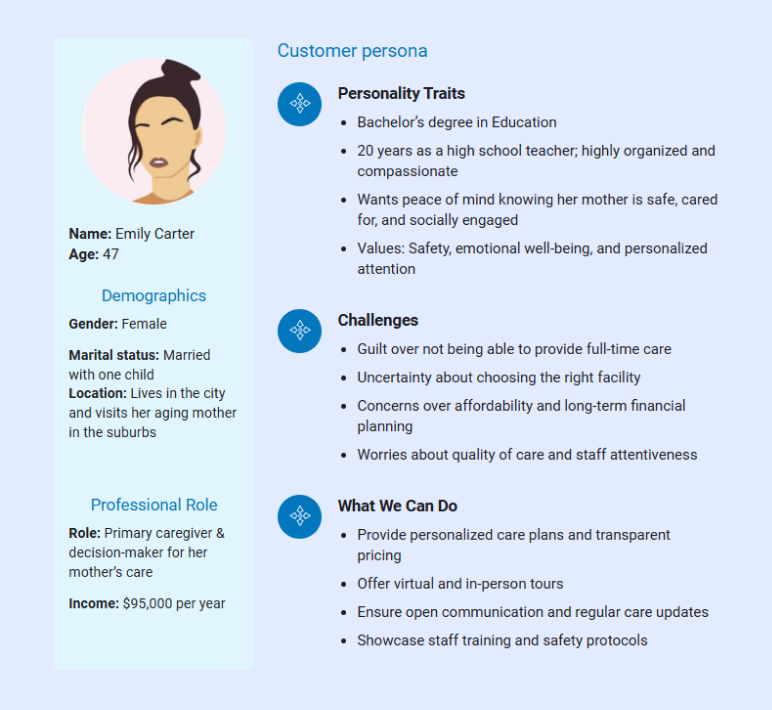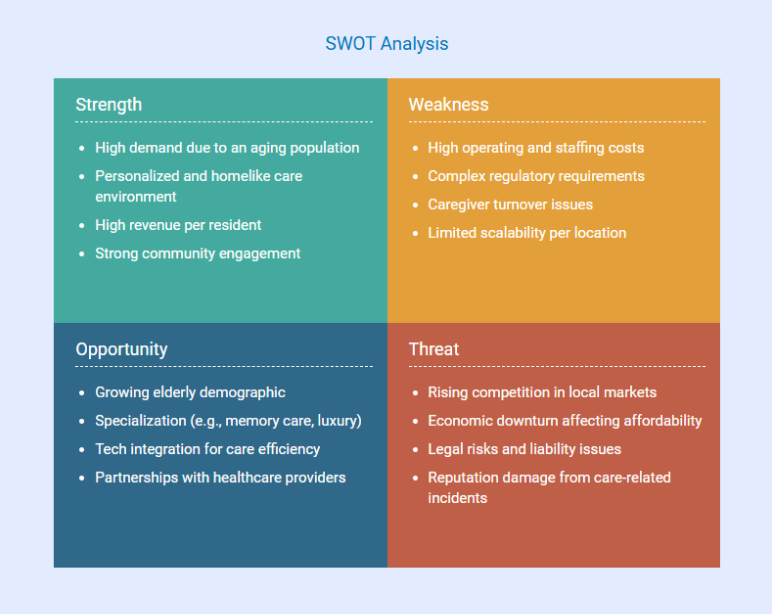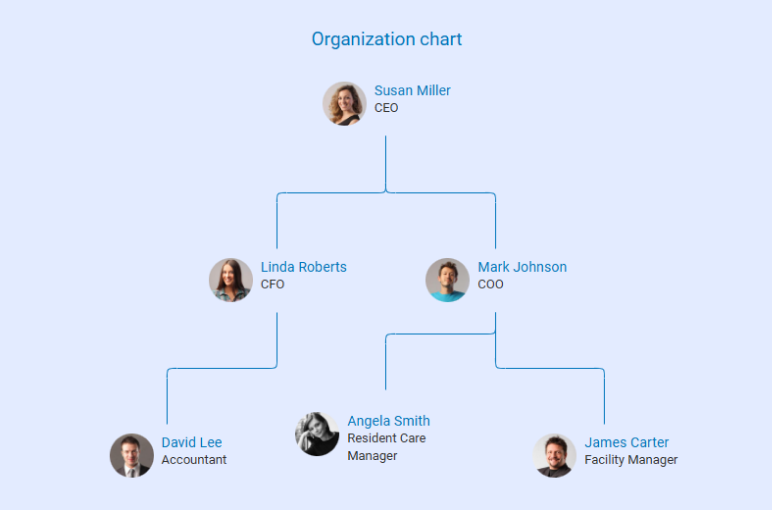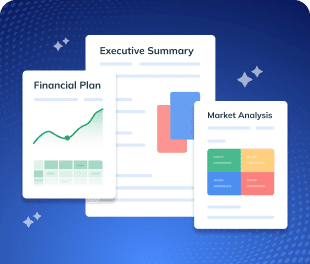Starting a residential assisted living business can be incredibly rewarding. You get to provide a safe, caring home for seniors and make a positive impact on their lives.
But turning that vision into a successful reality takes more than compassion and good intentions. You need a solid plan to stay on track, navigate regulations, attract residents, and ensure your facility actually makes money.
Wondering how to draft one?
Don’t worry! This residential assisted living business plan template will walk you through everything.
What is a residential assisted living business plan?
A residential assisted living business plan outlines your facility’s mission, services, target market, and growth strategy. It includes objectives, market research, and financial projections to demonstrate viability.
This plan serves as both an internal guide for your team and a pitch for lenders or investors, covering everything from senior care vision to daily operations.
Why do you need a business plan for an assisted living facility?
Starting a residential assisted living business without a plan is like driving without a map; you might move forward, but chances are you’ll face unavoidable setbacks.
A well-thought-out business plan is essential for several reasons:
- Clarity and strategy: A business plan helps define your business, target audience, operations, and goals, preventing costly mistakes.
- Market research & competitive edge: Researching your market and competitors helps position your facility for success and set competitive pricing.
- Navigating regulations: A business plan ensures you meet licensing and regulatory requirements, avoiding delays and compliance issues.
- Funding and investment: A plan lets you secure funding and raise startup capital, showing investors or banks how funds will be used and repaid.
- Increasing your chances of success: A business plan helps identify weaknesses and track progress, ensuring long-term success and accountability.
In short, a solid business plan gives your assisted living facility the roadmap it needs to thrive, from launch to long-term growth.
How to write a residential assisted living business plan?
Here’s a detailed breakdown of all the key components of an assisted living facility business plan and what to include in each:
1. Executive Summary
The executive summary is like an elevator pitch for your entire assisted living business plan. It gives readers a quick snapshot of what your assisted living business is all about and why it will succeed.
Even though it’s the first section of your plan, it’s wise to write it last, after you’ve worked out all the details in the rest of the plan. This way, your executive summary can truly capture the highlights of your strategy.
Here’s what to include in this section :
- Concept & overview: Describe your assisted living facility’s concept in 1–2 sentences, focusing on its core mission and unique approach.
- Mission & vision: State your mission, why you’re in this business, and your vision for the future, such as providing a high-quality, nurturing home for seniors.
- Target market & need: Identify your target market and the need you’re fulfilling, emphasizing the demand from the growing senior population or local gaps in quality care.
- Services & differentiators: List core services offered and highlight key differentiators, such as a higher caregiver-to-resident ratio or specialized programs like dementia care.
- Business model & operations: Summarize how your facility will generate revenue and operate efficiently, noting strong management plans or strategic partnerships if relevant.
- Financial highlights: Provide a snapshot of financial projections, including expected revenue, profit at capacity, and the timeline to profitability.
In short, the executive summary distills your entire plan into a persuasive and readable briefing. The goal is to grab the reader’s attention and get them excited about your assisted living venture.
If you nail the executive summary, you’ll motivate readers to dive into the full plan for the details.
Say goodbye to boring templates
Build your business plan faster and easier with AI
Plans starting from $14/month

2. Business Description
Now, it’s time to present a deeper description of your assisted living business.
The business overview section provides all the foundational details about your company so that someone understands exactly what you’re building and why.
Here’s how to structure it:
- State your business’s name and location, whether it’s a brand-new facility or an acquisition, your legal entity, and who the owners are.
- Reiterate your mission in a concise statement and share your vision as the long-term aim of the facility.
- Summarize the backstory or inspiration behind starting the facility, whether it’s an expansion or a brand-new venture.
- Lay out a few clear, short-term, and long-term goals that are specific and measurable to show growth and success planning.
- Give an overview of the services your facility will offer, including medication management and amenities like private rooms or recreational activities.
- Describe the profile of the residents you intend to serve and mention what sets your assisted living home apart, whether it’s your care philosophy, credentials, or a strategic edge.
By the end of the business overview, the reader should have a solid understanding of who you are, what you aim to do, and what foundational strengths you’re bringing to the table.
Keep the tone confident and factual, imagine you’re introducing your company to someone in a few minutes, and want to hit all the key points.
3. Market Analysis
The market analysis section is where you demonstrate your understanding of the assisted living industry and the specific market you’re entering. This part proves that you’ve done your homework on who your customers are, what they need, and how your business will fit into the market.
A strong market analysis also gives credibility to your entire plan, so let’s break down what to include:
Industry Overview
Start by describing the assisted living industry at a high level. Include some compelling stats or trends to show the industry’s size and direction.
Local Market & Demand
If you have data on the local senior population or demand projections, include it. If you conducted any surveys or have waiting list figures, mention those too. Anything that quantifies demand for your specific location is golden.
Target Market
Next, zoom in on your specific target market. Who are your ideal residents and/or the people making decisions on their behalf?
Describe their demographics and needs. It can be useful to break your market into segments if applicable.
Market Segmentation
It can be useful to break your market into segments if appropriate. Another possible segmentation is by price/amenity level: budget-conscious vs. luxury clientele.
Explain which segment(s) you are targeting and why they are attractive. This shows you know where you fit in the market.
You can even insert a buyer persona, like shown below, to visually represent your ideal resident and decision-maker. This personalizes your market insights and adds context to your target audience.

Competitive Analysis
Identify other assisted living facilities in your area and analyze the competition. Who are the main competitors or alternatives for your target customers?
SWOT Analysis
Many business plans include a SWOT analysis—outlining your internal strengths and weaknesses, and the external opportunities and threats in the market. This can be done in a brief subsection or even a visual chart.

In summary, the market analysis should convincingly answer: Is there a real need for my services, and can I compete effectively in this market?
When you articulate who your customers are and how you’ll meet their needs better than the competition, you give readers confidence that your assisted living business can attract residents and achieve steady occupancy.
4. Services Offered
In this section, describe what exactly you’re offering at your assisted living facility. The goal is to paint a clear picture of the resident experience and services in your facility, and how those services meet the needs identified in the market analysis.
Here’s what to include in services for a residential assisted living business plan:
- Core care services: Explain what you offer, such as assistance with activities such as bathing, dressing, grooming, toileting, and eating.
- Living accommodations: Describe the housing setup, including the number of rooms or beds and whether they are private, semi-private, or a mix.
- Dining and nutrition: Explain how meals will be provided to residents, noting the number of meals per day and any options for dietary needs.
- Housekeeping and laundry: Mention that housekeeping and laundry services will be included as part of the standard care, helping residents maintain cleanliness and comfort in their personal living spaces.
- Activities and social programs: Provide details about recreational and social activities available to residents.
By the end of this section, the reader should clearly understand what a resident’s life at your facility will include and why those services are appealing.
5. Marketing Strategy
No matter how great your facility is, it won’t fill itself. This section explains how you’ll attract residents and turn inquiries into move-ins, which is crucial for maintaining high occupancy and financial success.
The following are a few marketing and sales strategies that many assisted living facilities use to promote their services. You may consider including any.
- Build a user-friendly website with service details, and use SEO and social media to reach families.
- Advertise in senior newsletters and church bulletins, as well as sponsor local events.
- Highlight your unique offerings, like personalized care or a homestyle feel.
- Outline a clear sales process: tours, timely follow-ups, trial visits, and a waitlist.
- Mention competitive pricing, limited-time offers, and support with insurance or benefits.
A great assisted living home needs more than just quality care—it needs a solid marketing and sales strategy to maintain high occupancy and ensure long-term success.
6. Management Team
Investors often say they invest in people as much as in ideas. In the management team section, you’ll highlight the backgrounds and expertise of the key people who will run your residential assisted living business. Even if your team is small, this section is critical.
First, list out the key team members and their titles/roles. This usually includes the Owner(s)/Founder(s), the Administrator or General Manager, and any other executives or senior staff critical to operations.
For each person, provide a brief bio highlighting relevant experience, achievements, and responsibilities.
It’s good to clarify who is responsible for what aspect of the business. This shows that all management hats are worn by someone competent.
Further, add an organizational chart here to visually outline your team structure, showing key roles and reporting lines clearly. Something like this:

If applicable, mention any other crucial team members or advisors/board members. Perhaps you have a medical director or an advisory board with experienced people. Or maybe a mentor from the industry or a partnership with a nurse practitioner.
By the end of the management team section, the reader should feel like: Yes, this team has the right mix of compassion, industry knowledge, and business savvy to run an assisted living facility.
7. Operations Plan
The operations plan outlines how your assisted living facility will function daily to ensure smooth logistics and quality care. Investors and lenders focus heavily on this section, as strong operations are key to resident safety and business success.
Here’s what to include in this section:
Facility & location
Describe your building layout, capacity, any required renovations, and benefits of the location. Mention outdoor space use to provide an operational view of the premises.
Licensing & compliance
Outline your plan for obtaining and maintaining licensing and certifications. Mention compliance with health and safety standards to show legal readiness and reduce risks.
Staffing plan
List key staff roles, administrator, caregivers, nurse, cook, housekeeper, and possibly an activities coordinator, and the number needed to operate at full capacity.
Staffing schedules & training
Explain how you’ll provide 24/7 coverage, handle emergencies, and ensure staff receive proper training to uphold care quality.
Daily operations & routines
Give an overview of daily procedures and routines to show structure. Mention any specific systems you’ll use for care and supervision.
Policies, procedures & technology
Note that you’ll have written policies on admissions, medication management, incident reporting, and emergencies. Mention any software or tech you’ll use to support safety and efficiency.
By covering these points, you show how your facility will consistently deliver quality care through effective, organized operations.
8. Financial Projections
The financial plan section is where you turn your assisted living business vision into a realistic financial roadmap. It shows how your facility will make money, what it will cost to operate, and whether it can sustain long-term profitability.
This section is critical, especially for investors, because it gives them confidence in the financial viability of your plan.
A well-prepared financial plan adds credibility to your entire business. Here’s what to include:
- Revenue model
- Cost structure
- Profit and loss statement
- Break-even analysis
- Cash flow considerations
- Use of funds & key assumptions
In summary, the financial plan should clearly answer: How will this business make money, and how will it stay financially healthy?
When your numbers support your vision, readers can trust that your assisted living facility is built for long-term success.
9. Funding Request
The funding request section outlines how much capital you need and exactly how it will be used to launch or expand your assisted living facility.
Here’s what to include:
- Funding amount: State the total amount you’re seeking and whether it’s a loan or investment.
- Use of funds: List main categories like Renovation, Equipment, Pre-opening Expenses, Operating Capital, and Reserves.
- Use of funds breakdown: Include a table or chart showing how much will go to each category for added clarity.
In summary, this section should clearly answer: how much funding do I need, and where will it go?
Download a free residential assisted living business plan template
Ready to create your own residential assisted living business plan, but not sure where to start? We’ve got you covered. Download our free assisted living business plan template (PDF) to help you get started with clarity and confidence.
This template includes a complete outline and sample content for every key section. It’s fully customizable to fit your facility, whether you’re opening a small home-based care residence or a multi-room assisted living center. It saves you time, keeps you organized, and ensures you don’t overlook any critical details.
The Quickest Way to turn a Business Idea into a Business Plan
Fill-in-the-blanks and automatic financials make it easy.
Summary
That’s a wrap! We’ve covered all the essential parts of a residential assisted living business plan and how to approach each one. Plus, you have a ready-to-use sample to guide your next step.
Still, feeling stuck or want to move faster? Tools like Upmetrics can help you streamline the entire planning process.
With built-in AI support, financial forecasting tools, customizable templates, and expert resources, you can build a solid, professional plan quickly and efficiently.




